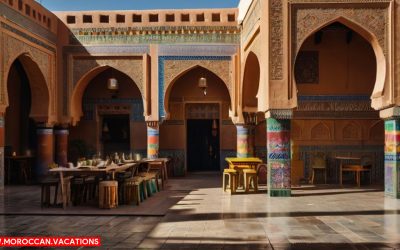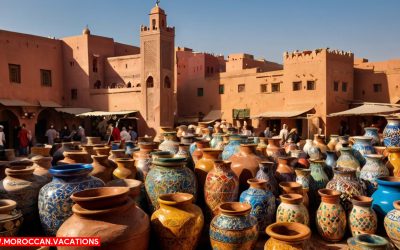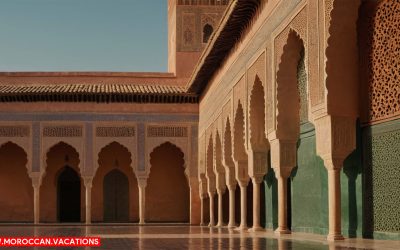Origins of Moroccan Calligraphy
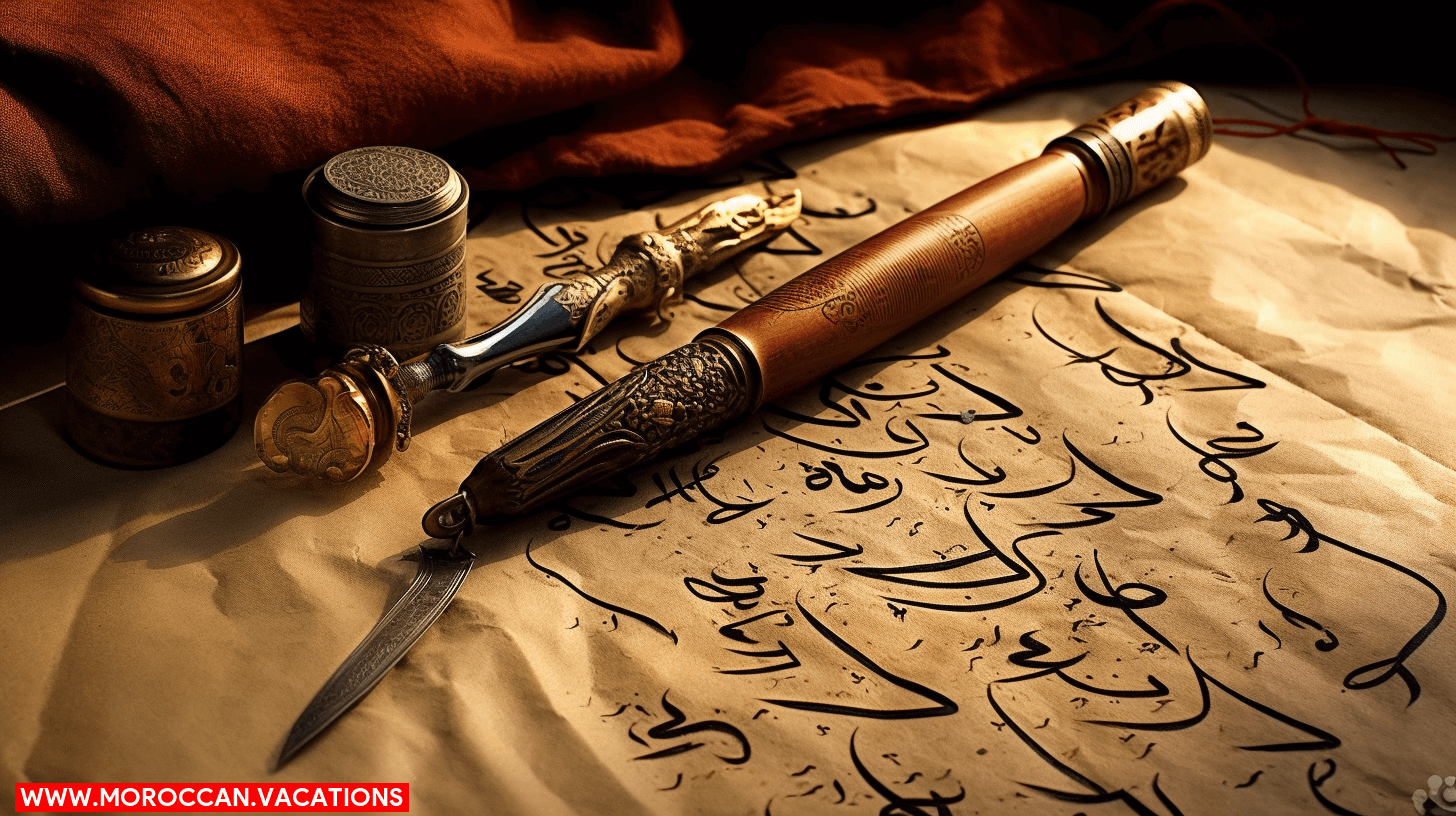

You’re about to embark on a journey, uncovering the beauty of traditional Moroccan calligraphy. You’ll delve into its origins, marvel at the intricate styles influenced by Islamic art, and appreciate its cultural significance. You’ll become acquainted with the tools and techniques used, meet renowned Moroccan calligraphers, and even get a taste of learning this fascinating art form. Join us as we explore the challenges in preserving this art and its vibrant future. Get ready, it’s time to explore the art of Moroccan calligraphy.
In your exploration of Moroccan calligraphy, it’s essential to start at the beginning, with the origins of this intricate art form. The roots of Moroccan calligraphy lie in Islamic culture, with its inception dating back to the 7th century. This art form has experienced a vast Calligraphic Evolution over the centuries, with the influence of various dynasties and cultures.
You’ll find that Moroccan calligraphy isn’t monolithic; instead, it’s characterized by Script Variations. Each script carries its unique aesthetics and historical context. For instance, the Kufic script, with its angular and geometric design, was the earliest form, widely used in the Umayyad and Abbasid periods. The shift to the cursive Naskh script, more fluid and dynamic, marked a significant transformation in Moroccan calligraphy.
Understanding the origins of Moroccan calligraphy isn’t just about tracing its historical evolution; it’s also about appreciating the inherent freedom in its expression. It’s the freedom to create, to innovate, and to adapt. You see, Moroccan calligraphy isn’t just an art form; it’s a testament to cultural resilience and the enduring desire for freedom of expression.
Understanding Calligraphic Styles
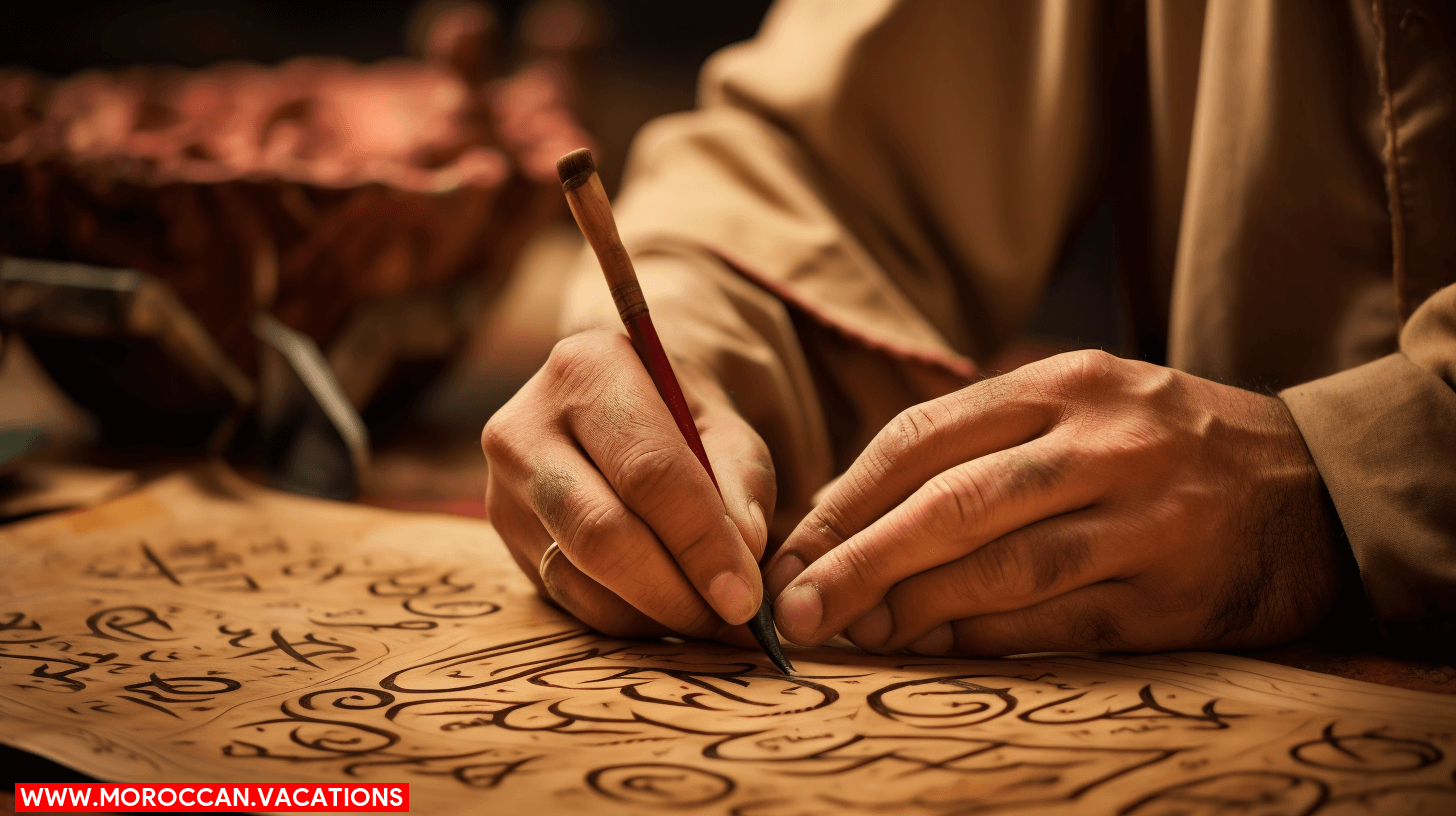

Moving on from the origins, you’ll now dive into the heart of Moroccan calligraphy by understanding its various calligraphic styles. Each style, be it Kufic, Thuluth, or Diwani, carries its own unique calligraphic symbolism. This symbolism is inherent in each curve, dot, and line, reflecting the deep cultural roots and spiritual essence of the Moroccan people.
The Kufic style, the oldest form, brims with geometric precision, demonstrating the era’s mathematical prowess. It’s a testament to calligraphy’s evolution, from rigid formality to more fluid styles. Thuluth, in contrast, is more ornate, displaying the Moroccan love for beauty and intricacies. Then comes the Diwani style, renowned for its free-flowing elegance. Here, you see an embodiment of freedom, reflecting the Moroccan spirit’s resilience and adaptability.
It’s important to appreciate not just the aesthetic appeal of these styles but also the cultural connotations they carry. Moroccan calligraphy is more than artistic expression; it’s a historical document, a spiritual pathway, and a societal mirror. The more you understand these styles, the deeper you appreciate the richness of Moroccan culture. So, delve in, explore, and let the calligraphic symbolism guide your cultural journey.
Influence of Islamic Art
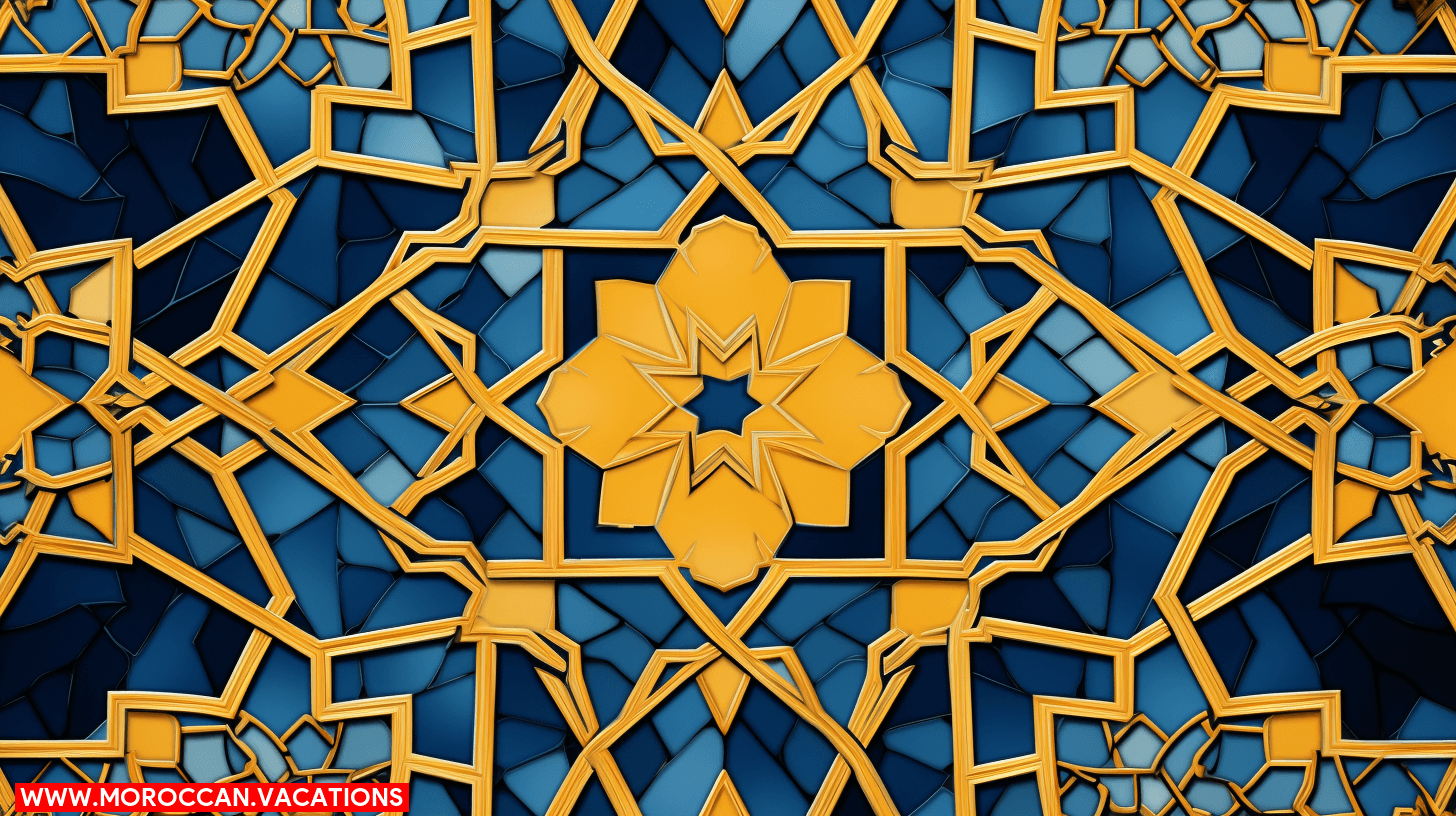

Now, let’s turn your attention to the profound influence Islamic art has had on Moroccan calligraphy. The Islamic aesthetics, characterized by intricate geometric patterns and a unique sense of abstraction, deeply shape this art form. You’ll appreciate how Moroccan calligraphy has transformed through artistic innovations, incorporating these distinct Islamic elements.
| Influence | Islamic Aesthetics | Artistic Innovations |
| Geometry | Use of symmetrical and repetitive patterns | Complexity in design, detail and execution |
| Abstraction | Spirituality conveyed through non-figurative art | Unique character forms and design |
| Script | Kufic and Naskh scripts prevalent | Development and refinement of Maghribi script |
| Material | Use of ink, gold, and fine paper | Diversification into ceramics, textiles and architecture |
This table gives a snapshot of the intricate interplay between Islamic aesthetics and artistic innovations in Moroccan calligraphy. The freedom to create, innovate, and adapt is at the core of this art form. It’s a transformative journey that goes beyond simple imitation, instead absorbing Islamic influences and reimagining them in a distinctively Moroccan context. So, as we delve deeper, you’ll realize that the charm of Moroccan calligraphy lies not just in its beauty, but also in its rich cultural tapestry.
Tools and Techniques Used
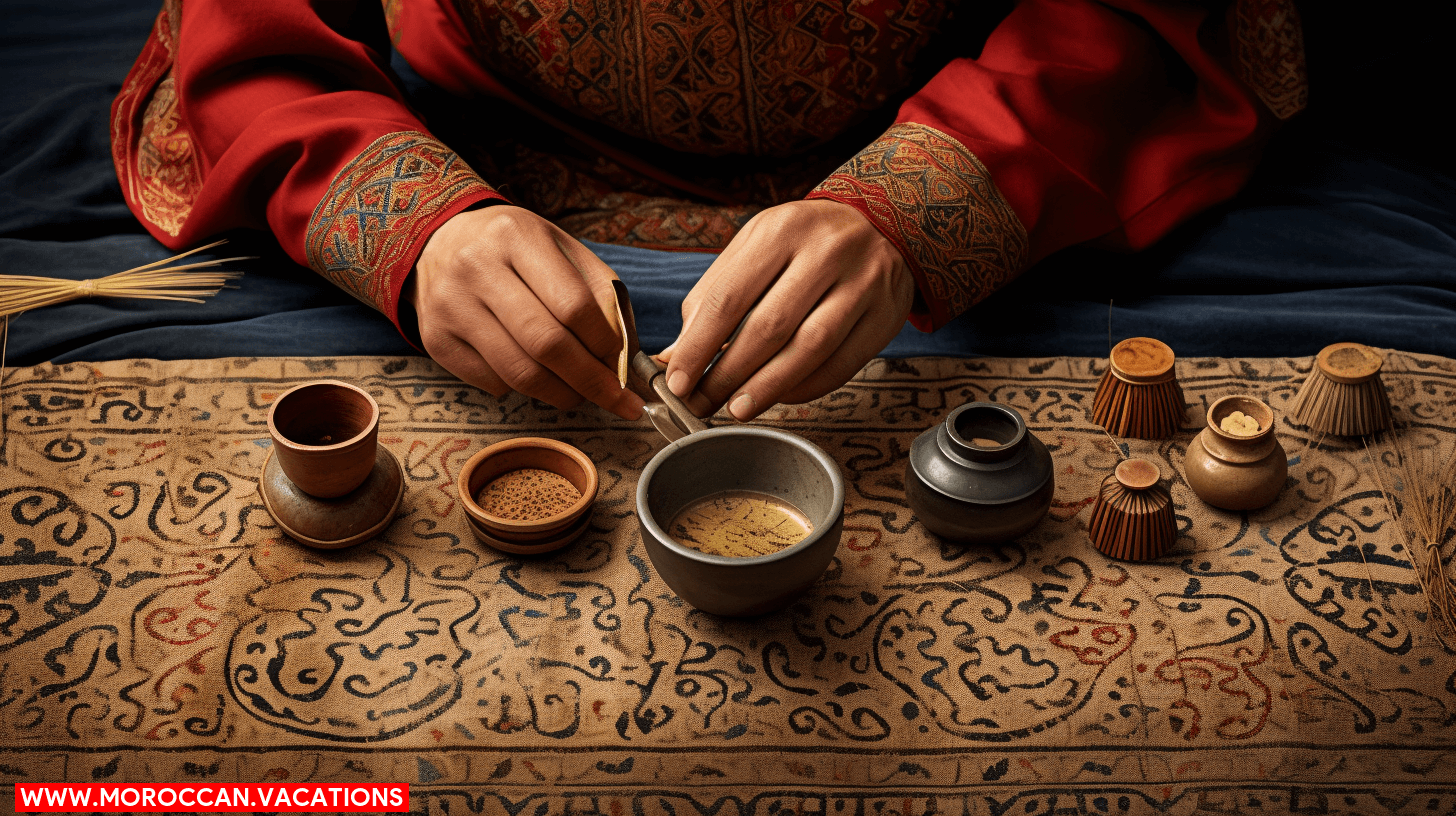

Diving right into the technical side, you’ll find that the tools and techniques used in Moroccan calligraphy artistically echo its Islamic influences. The artistry revolves around a distinct harmony between ink preparation and the choice of calligraphy materials.
Ink preparation, a meticulous process, uses natural, locally sourced materials. Artists typically grind soot or lampblack with a pestle and mortar, slowly adding gum Arabic and water. This mixture is then left to mature, resulting in a deep, rich black ink that flows smoothly onto the page.
The calligraphy materials also play a vital role. The most crucial tool, the reed pen or ‘Qalam’, is crafted from a dried bamboo or reed stick. Its tip is cut to a precise angle, allowing for the broad, sweeping lines characteristic of Moroccan calligraphy. The paper, often handmade, is treated with starch to prevent ink bleeding.
Each tool and technique used cannot be seen as separate entities but rather parts of a harmonious whole. The result is a transcendental art form, a dance of ink on paper that reflects the freedom and beauty of Moroccan culture and its Islamic heritage. The balance between preparation, materials, and execution is the key to mastering this traditional art.
Importance in Moroccan Culture
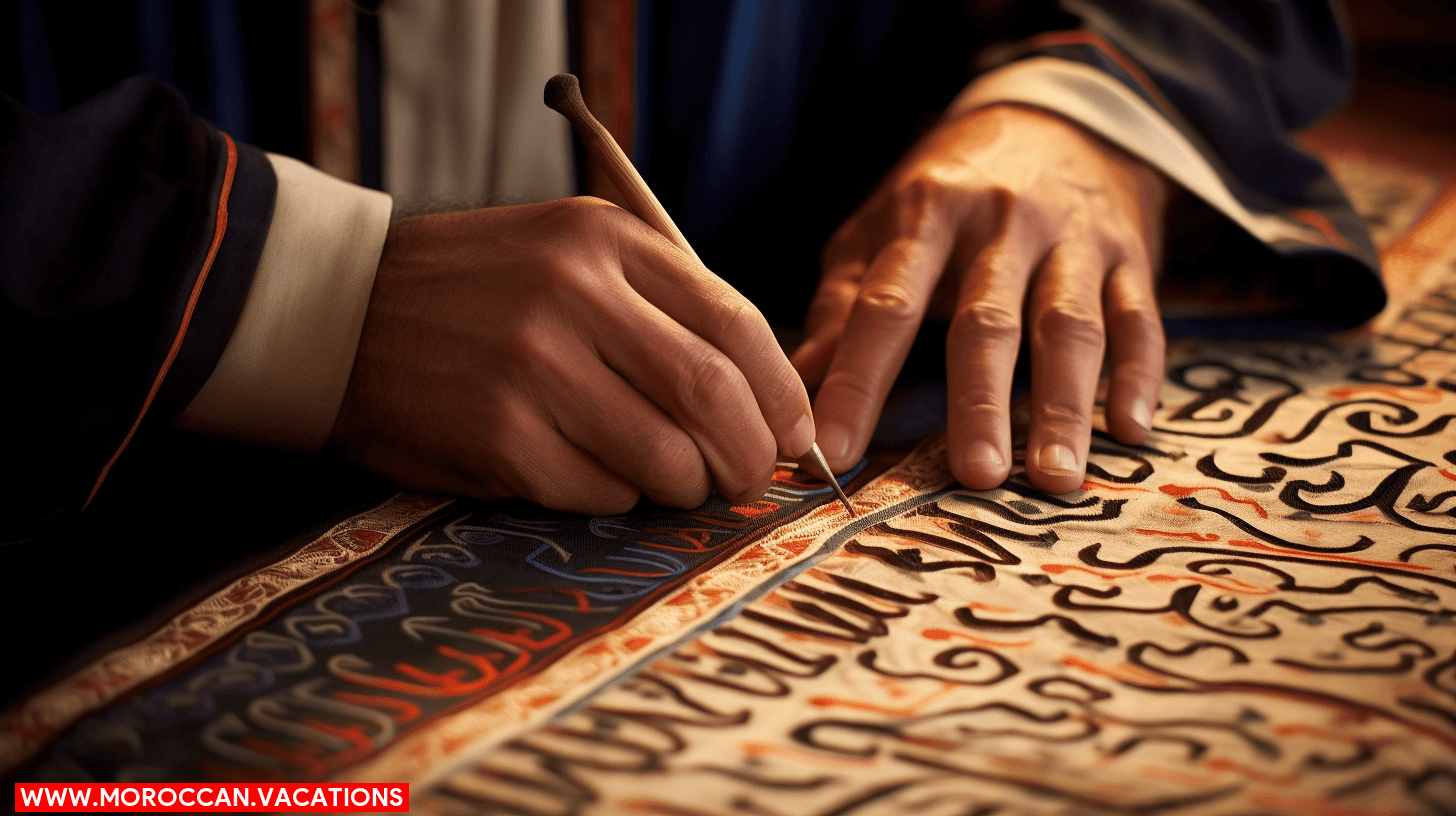

In understanding the significance of Moroccan calligraphy, you’ll discover it’s more than just an art form – it’s an integral part of the country’s cultural heritage. Its importance can’t be overstated; calligraphy is a potent symbol of the Moroccan cultural identity. It’s a symbolic representation of the country’s love for tradition, its respect for the written word, and its devotion to artistic expression.
Here are three key ways in which Moroccan calligraphy exemplifies the country’s cultural richness:
– Calligraphy is omnipresent in Moroccan public and private life, adorning mosques, homes, and public spaces, underscoring its societal importance.
– This art form is a direct link to the past, connecting modern Moroccans to their ancestors and preserving the historical continuity of the nation.
– Through the beauty of its designs, calligraphy provides a source of national pride and a unique artistic medium for free expression.
As you delve deeper into the world of Moroccan calligraphy, you’ll find it’s not just an aesthetic pleasure. It’s a living, breathing testament to the Moroccan spirit and culture – a celebration of a rich heritage, a form of personal and collective expression, and a beacon of cultural identity.
Calligraphy in Modern Morocco
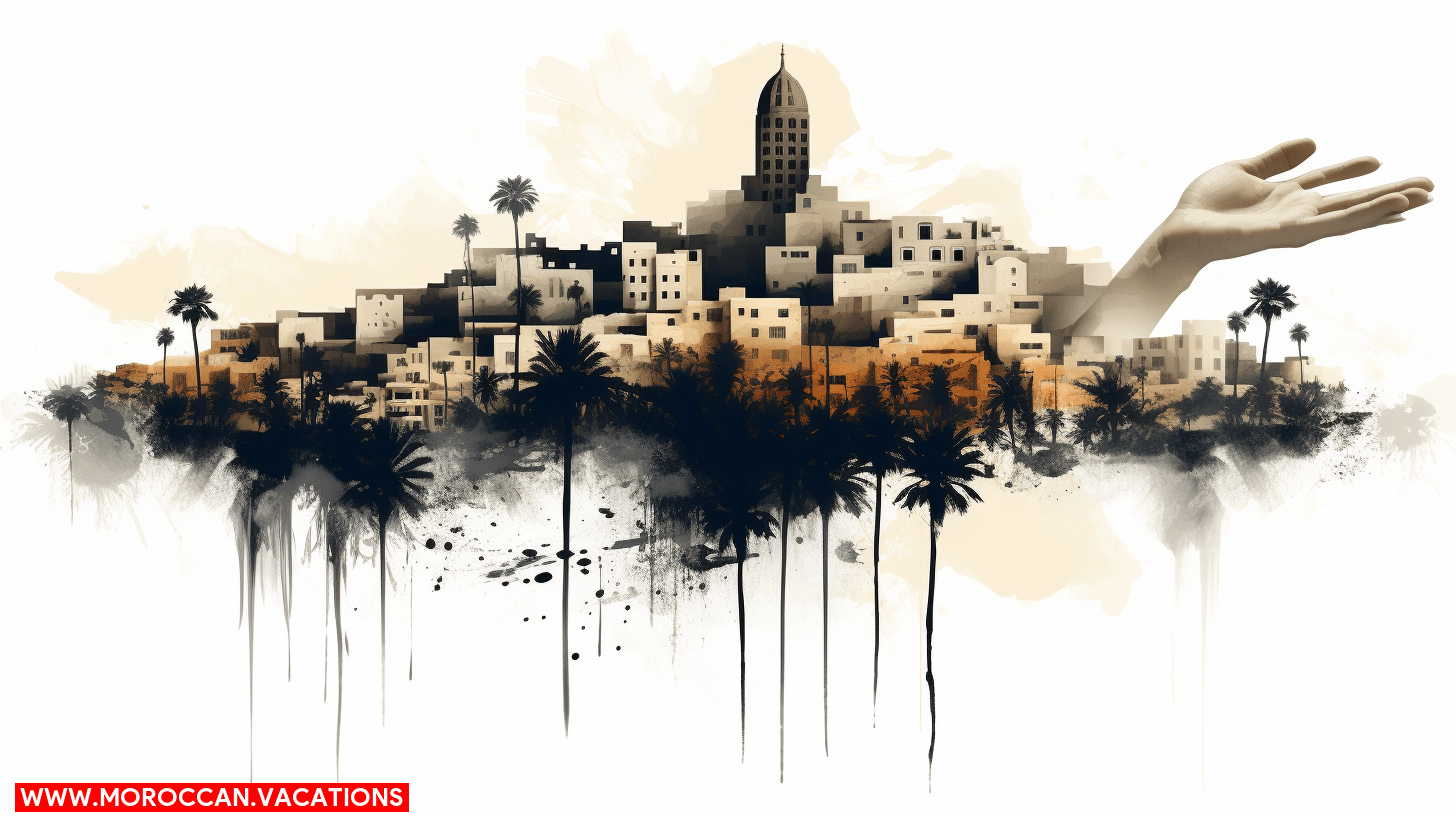

Continuing your journey into Moroccan calligraphy, you’ll find that this ancient art form has not only survived in modern Morocco, but it’s thriving and evolving in exciting ways. Contemporary interpretations are making waves in the artistic scene, marrying tradition with the fresh energy of the new.
You’ll find dynamic examples of calligraphy fusion where this age-old craft intersects with modern art forms like graphic design and street art. It’s not unusual to see urban walls adorned with beautiful calligraphic murals, where the ancient Arabic script breathes life into the concrete canvas. This is a freedom of expression, an artful rebellion against the norms, one that embraces the past while looking forward.
The digital realm has also embraced calligraphy, with Moroccan designers using traditional script in innovative ways. You’ll find it in logos, advertisements, even in website design. It’s a testament to Morocco’s love for its heritage, a national identity proudly displayed in every stroke.
The face of calligraphy in modern Morocco is ever-changing, ever-evolving. It’s a dance between old and new, a testament to the country’s ability to honor its past while embracing the future. A true symbol of freedom, as fluid and beautiful as the lines it’s drawn with.
Famous Moroccan Calligraphers
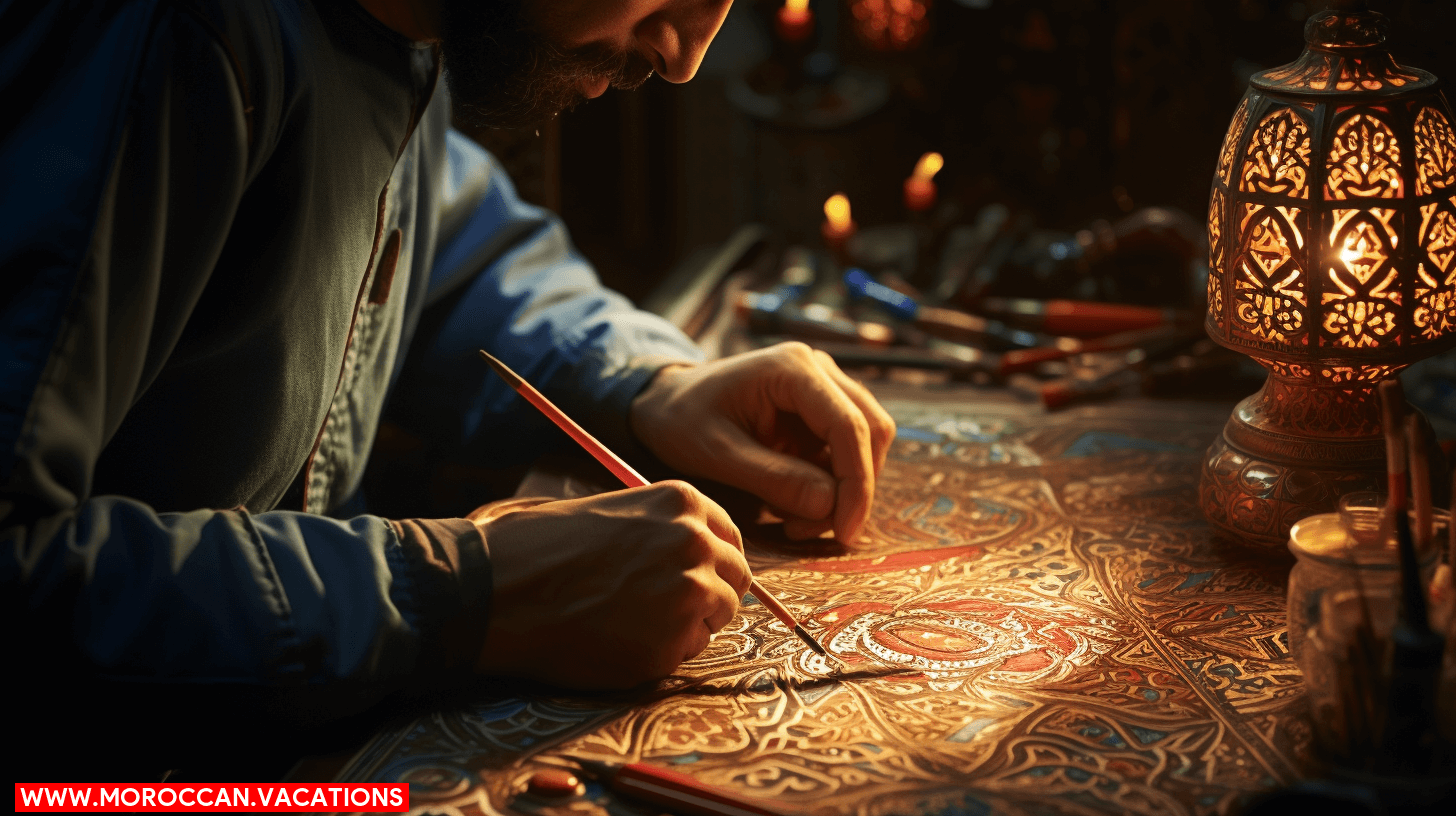

Now, let’s explore a few of the many talented Moroccan calligraphers who’ve made a significant impact on this evolving art form. Their work, often featured in calligraphy exhibitions, reflects not just their skill, but also their unique inspirations and interpretations of this ancient art.
– Mohamed Qarmad is renowned for his elegant, flowing script. His pieces are deeply rooted in the traditions of Moroccan calligraphy, yet they also incorporate modern elements. Qarmad’s inspirations range from spiritual texts to the everyday beauty of Morocco’s landscapes and architecture.
– Fatima Zahra Lakrissa is acclaimed for her mastery of multiple calligraphy styles. Her work is a testament to her passion for preserving and evolving this art form. Lakrissa’s exhibitions often highlight her innovative approach to combining traditional techniques with contemporary themes.
– Hassan Musa takes a more experimental approach. His bold, colourful works challenge traditional norms and encourage viewers to see calligraphy in a new light. Musa’s inspirations include political events and pop culture, which he cleverly weaves into his calligraphy.
These calligraphers have not only contributed significantly to Moroccan calligraphy but have also expanded its boundaries, offering you a taste of freedom in how you perceive this beautiful art form.
Learning Moroccan Calligraphy
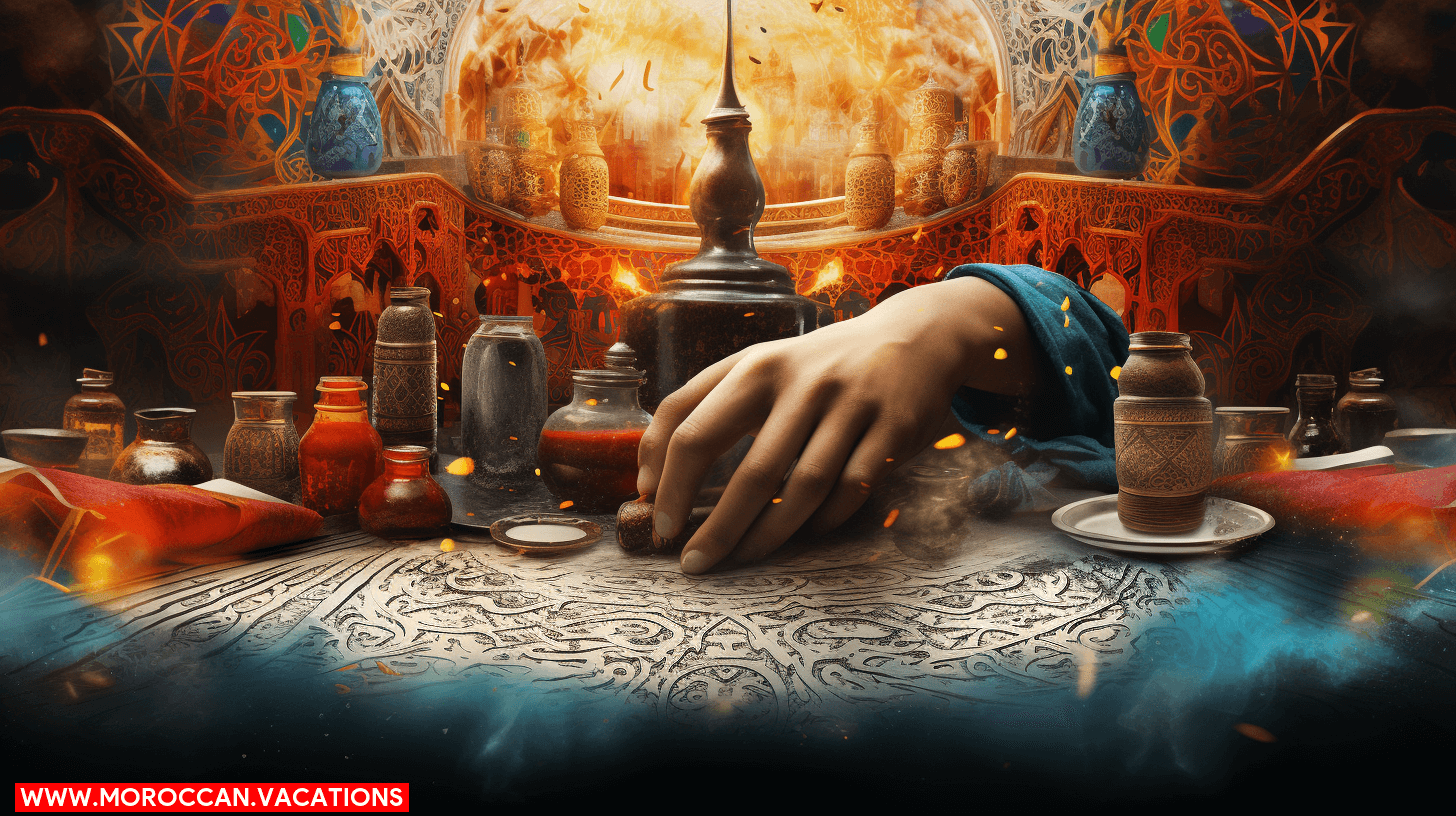

If you’re captivated by the works of these talented Moroccan calligraphers, you’ll find diving into the art of Moroccan calligraphy an enriching and rewarding venture. It’s not just an artistic endeavor, but also a liberating journey of self-expression.
To begin, attending calligraphy workshops will provide a solid foundation. Here, you’ll learn the basics, from understanding the Moroccan script to mastering the pen strokes. Instructors provide in-depth knowledge about the traditional techniques, while also encouraging creativity. This balance enables you to explore your artistic freedom while respecting the cultural authenticity of the art form.
However, workshops are just the beginning. Personal practice is where the real magic happens. This is your playground. Experiment with different styles, explore new ideas, and make the art truly yours. Remember, calligraphy is not just about writing—it’s about conveying emotion and telling a story. Your personal practice sessions are when you’ll develop your own unique style and truly make the art form your own.
In essence, learning Moroccan calligraphy is a journey of self-expression and cultural exploration. With a blend of structured learning and personal experimentation, you’ll find yourself immersed in this captivating art form.
Challenges in Preservation
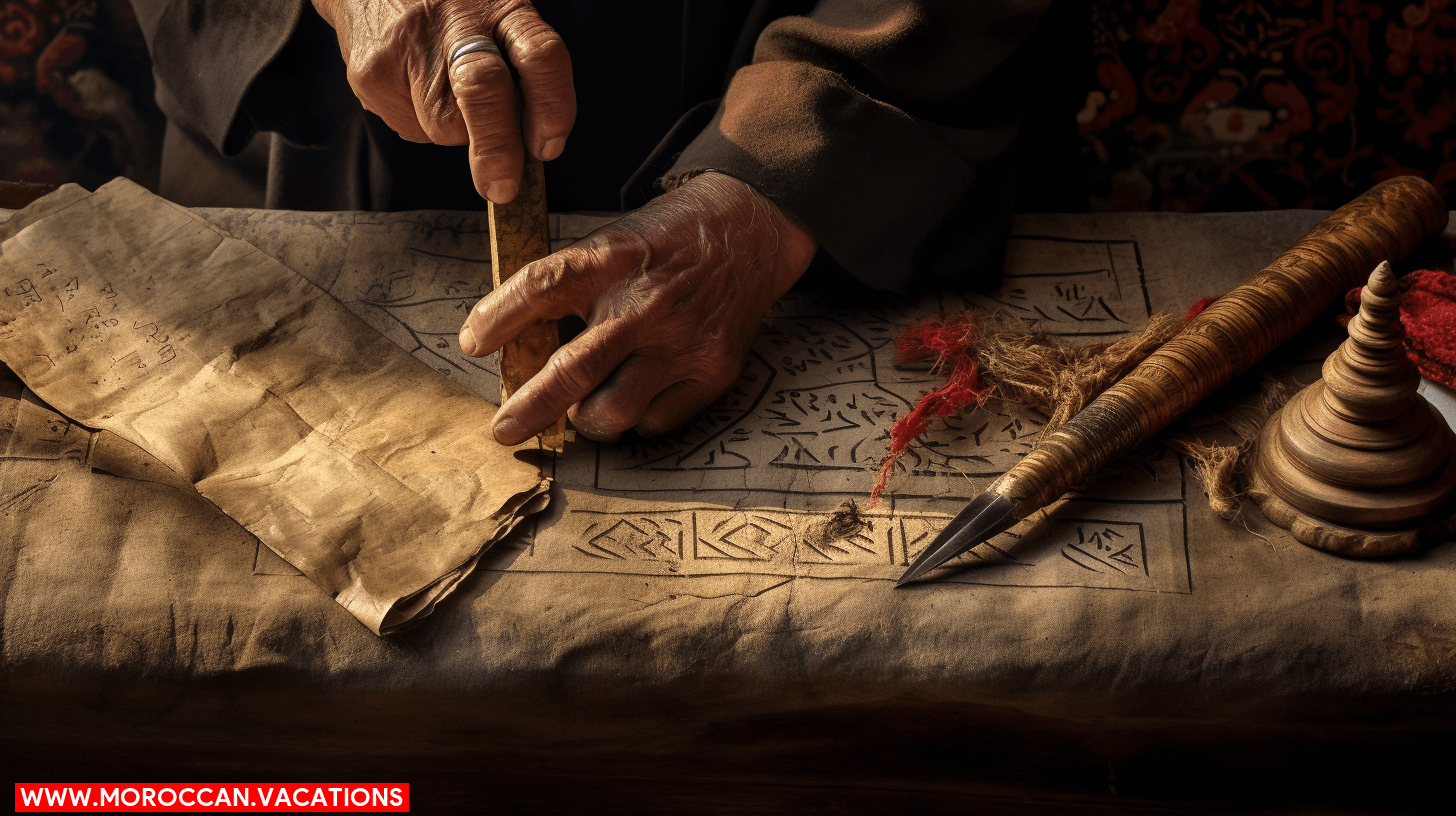

Despite your deep immersion in learning the art, you’ll find that preserving the traditional Moroccan calligraphy poses its own unique challenges. This beautiful, ancient form of artistic expression is under threat, and it’s up to you and others like you to keep it alive in the face of modern adversities.
The first hurdle is the rise of digital threats. The convenience and speed of digital design tools have challenged the painstaking, manual skill required to create traditional Moroccan calligraphy. The digital era has made it easy to create and replicate designs without understanding the art’s historical context and spiritual significance.
Secondly, the proliferation of untrained practitioners dilutes the art’s authenticity. This art requires years of dedicated study and practice, but many newcomers rush the process, focusing more on commercializing the art than mastering it.
Finally, there’s the challenge of societal apathy. Many Moroccans don’t understand the cultural significance of this art form and don’t value its preservation.
* Digital threats eroding the traditional practice
* Untrained practitioners diluting authenticity
* Societal apathy and lack of appreciation
Preserving Moroccan calligraphy is your fight for cultural freedom. It’s a challenging journey, but with passion and perseverance, you can help keep this beautiful tradition alive.
The Future of Moroccan Calligraphy
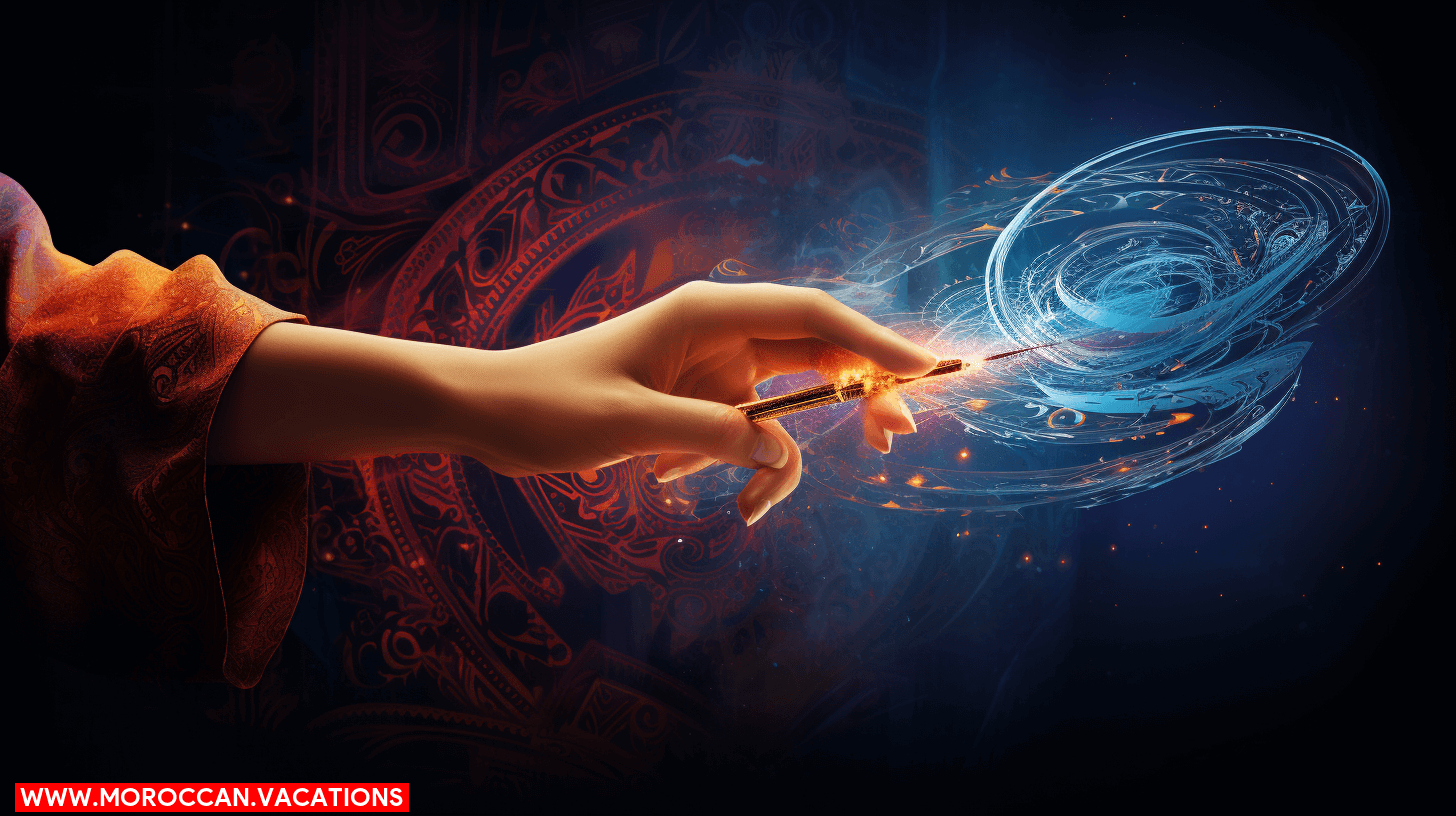

You’re at the forefront of this journey, shaping the future of Moroccan calligraphy with every stroke you master. As the digital evolution gains momentum, you’re crafting a path of freedom through your art. The fusion of calligraphy with modern tools isn’t a demise of this ancient craft, but rather its rebirth.
You’ve embraced the digital evolution, using it not as a crutch but as a catalyst. Traditional scripts are now being fused with digital mediums, creating a new genre – calligraphy fusion. This fusion is not a compromise, it’s a revolution. It’s a new dawn where ancient art meets the digital world, creating a vibrant cultural and artistic landscape.
However, it’s important to remember that the future of Moroccan calligraphy isn’t just about the digital evolution. It’s also about fostering a spirit of freedom and creativity. It’s about keeping the traditional alive while embracing the new.
As you continue to master your strokes, remember that you’re not just creating art. You’re shaping the future of a culture, a tradition that is centuries old. You’re creating a legacy that will be inked in the annals of Moroccan calligraphy.
Introducing Ayoub Karbachi, a brilliant wordsmith and curator of the Moroccan Vacations website. Prepare to immerse yourself in mesmerizing narratives and extraordinary moments, as he unveils the allure of Morocco's captivating destinations like never before.
Related Articles
The Intersection of Tradition and Modernity: Marrakesh's Art Scene
The Rich Heritage of Marrakesh's Art Step into the vibrant world of Marrakesh's art scene, where tradition and modernity collide in a captivating dance. Here, ancient crafts intertwine with contemporary artistry, creating a tapestry of creativity that will leave you...
Marrakesh's Art Workshops: A Hands-On Experience of Creativity
Exploring Marrakesh's Artistic Heritage Are you ready to unleash your creative potential? Look no further than Marrakesh's art workshops, where you can immerse yourself in a vibrant culture and learn new techniques and mediums. These hands-on experiences will allow...
The Symbolism in Marrakesh's Architectural Details
Uncover the rich symbolism woven into Marrakesh’s architectural details. From intricate tilework to ornate carvings, explore the cultural significance behind the city’s stunning landmarks. Embark on a journey of discovery through Marrakesh’s hidden meanings and timeless beauty.

